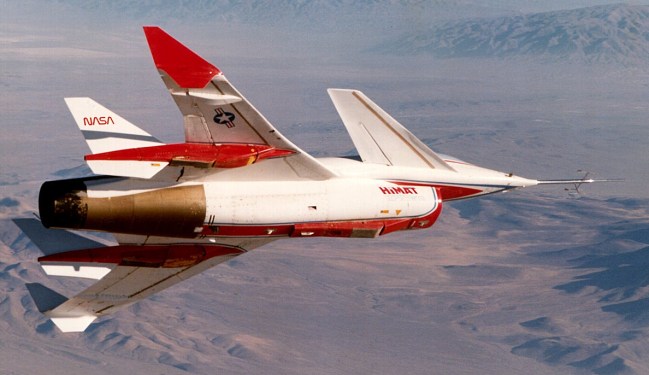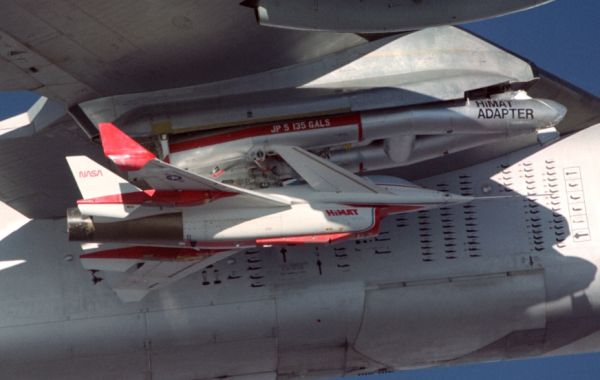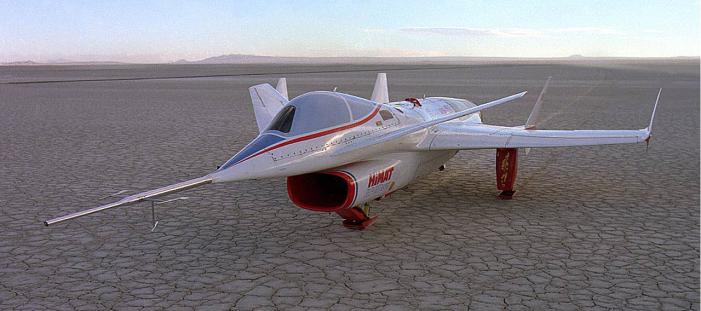Rockwell HiMAT
In 1975, NASA and the U.S. Air Force's Flight Dynamics Laboratory (FDL) initiated the HiMAT (Highly Maneuverable Aircraft Technology) program to develop an unmanned subscale demonstrator aircraft for advanced fighter airframe technology. In May that year, Rockwell won the design contest against competitive designs from Grumman and McDonnell. Two HiMAT RPRVs (Remotely Piloted Research Vehicles) were built, and the first flight occured in July 1979.
 |
| Photo: NASA |
| HiMAT |
The HiMAT was powered by a single General Electric J85-GE-21 turbojet with afterburner. Its layout with sharply swept wings, winglets, large canards and twin vertical tails was optimized for high agility. The vehicle was of highly modular construction, and wings, flying surfaces, exhaust nozzle and flight control system could relatively easily be replaced by alternative designs.
 |
| Photo: NASA |
| HiMAT |
The vehicle was air-launched from NASA's NB-52B carrier aircraft, and landed on its retractable three-point skid landing gear. The HiMAT was controlled from a ground control station (GCS), where a pilot could fly the aircraft using video from the RPRV's TV camera as well as telemetered flight parameters. The vehicle was also tracked by radar, and a TF-104G chase plane had backup controls in case of loss of datalink from the GCS. In case of full loss of command link, the vehicle automatically entered a constant-altitude, subsonic closed course.
 |
| Photo: NASA |
| HiMAT |
The HiMAT flight test program was finished in January 1983. The program's 26 free flights successfully produced data on advanced aerodynamics, structures, flight control systems and RPV operations.
Specifications
Note: Data given by several sources show slight variations. Figures given below may therefore be inaccurate!
Data for HiMAT:
| Length | 6.86 m (22 ft 6 in) |
| Wingspan | 4.76 m (15 ft 7.25 in) |
| Height | 1.31 m (4 ft 3.6 in) |
| Weight | 1530 kg (3370 lb) |
| Speed | Mach 1.6 |
| Propulsion | General Electric J85-GE-21 turbojet; 22.2 kN (5000 lb) |
Main Sources
[1] Kenneth Munson: "World Unmanned Aircraft", Jane's, 1988
Back to Directory of U.S. Military Rockets and Missiles, Appendix 4
Last Updated: 5 May 2004